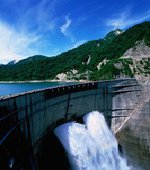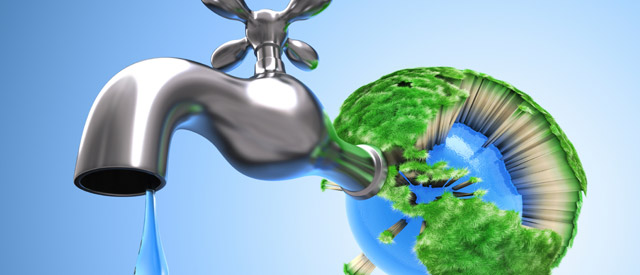 Copernicus will improve the UN's agricultural monitoring activities
Copernicus will improve the UN's agricultural monitoring activities
The Food and Agricultural Organisation of the United Nations (FAO) has been using Earth Observation technologies in its activities for more than a quarter of a century. Ahmed Shukri, Senior Economist at FAO, and Oscar Rojas, Natural Resource Officer at FAO, explain how the FAO's Global Information and Early Warning System works and how Copernicus data will contribute towards improving information relating to food supply and droughts at the global level.
The Global Information and Early Warning System (GIEWS) of the Food and Agricultural Organisation of the United Nations (FAO)[1] monitors the supply and demand of food in every country in the world on a continuous basis, and provides timely warnings of imminent food shortages, drought occurrences, hunger and famine at sub-national, national and/or sub-regional levels.
The system collects and archives information from many different sources. It makes use of remote sensing technologies and Geographic Information Systems (GIS) to identify regions experiencing unfavourable crop growing conditions and food supply shortfalls, as well as identifying areas and/or populations that may be prone to food insecurity.
"The Copernicus constellation of Sentinel satellites, the first of which was launched into orbit on the 3rd of April 2014, is expected to contribute to the improvement of the FAO-GIEWS Earth Observation-based monitoring system by:
- greatly enhancing agricultural monitoring through timely access to essential data and information (throughout the agricultural season);
- improving crop masks[2] and the development of crop specific masks (maize, rice, pastures, etc.) which are expected to improve the correlation between vegetation indices and yield;
- enhancing the ability to improve production forecasts that are essential for early warning purposes through establishing a robust time-series;
- improving the accuracy of estimates relating to food production by allowing for better delimitation between irrigated and rain-fed crop areas."
Ahmed Shukri, Senior Economist at FAO, and Oscar Rojas, Natural Resource Officer at FAO
The Global Information and Early Warning System (GIEWS) in practice
Since 1988 GIEWS has been utilising low-resolution satellite remote sensing data to monitor levels of vegetation and rainfall over large areas in near real-time. In particular, GIEWS has been using satellite images while continuing the use of the Cold Cloud Duration (CCD) approach, to provide estimates of rainfall over Africa, and Normalised Difference Vegetation Index (NDVI) images for monitoring vegetation conditions in all countries. These tools effectively provided GIEWS with important information on possible drought, crop growing and rangeland conditions.
The existing version of ASIS is designed for detecting agricultural hot spots at a global level. There are plans to develop stand-alone versions of ASIS for the national and sub-national levels, with different monitoring capabilities and specifications. The stand-alone versions will be calibrated with local agricultural statistics and will focus on the main agricultural products of the country or region of interest. These versions could also be used for pasture monitoring and for other risk management activities, including for crop insurance.
The FAO-GIEWS, as well as the ASIS stand-alone versions, will benefit from data derived from Copernicus sentinels.
[1] FAO is an agency of the United Nations that leads international efforts to defeat hunger. The three main goals are: (1) the eradication of hunger, food insecurity and malnutrition; (2) the elimination of poverty and the driving forward of economic and social progress for all; and (3) the sustainable management and utilisation of natural resources, including land, water, air, climate and genetic resources for the benefit of present and future generations.
[2] The term "crop mask" in Geographical Information Systems terminology refers to an information layer which shows areas in which (specific) crops are grown.
For further information: FAO website
| Contact information | n/a |
|---|---|
| News type | Inbrief |
| File link |
http://newsletter.gmes.info/issue-08-october-2014/article/copernicus-will-improve-uns-agricultural-monitoring-activities |
| Source of information | GMES |
| Keyword(s) | GIS, remote sensing, earth observation |
| Subject(s) | AGRICULTURE , HYDRAULICS - HYDROLOGY , INFORMATION - COMPUTER SCIENCES , INFRASTRUCTURES , MEASUREMENTS AND INSTRUMENTATION , METHTODOLOGY - STATISTICS - DECISION AID , NATURAL MEDIUM , RISKS AND CLIMATOLOGY , TOOL TERMS , WATER DEMAND |
| Relation | http://www.fao.org/giews/earthobservation/ |
| Geographical coverage | n/a |
| News date | 19/10/2014 |
| Working language(s) | ENGLISH |
 you are not logged in
you are not logged in





